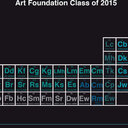Determination of harmane and harmine in human blood using reversed-phased high-performance liquid chromatography and fluorescence detection.
Palabras clave
Abstracto
A number of tremorogenic beta-carboline alkaloids have been found in common plant-derived foodstuffs, beverages, and inhaled substances. Because of their natural presence in the food chain, there is a growing concern regarding the potential risks of certain essential tremors associated with the long-term, low-level dietary exposure to these alkaloids. The purpose of this study was to develop an effective analytical method to determine blood levels of two major beta-carboline derivatives, harmane and harmine. Human blood was extracted with ethyl acetate and methyl-t-butyl ether (2:98) under an alkaline condition. After evaporation of organic solvent, the samples were reconstructed in methanol. The samples were fractionated on a 250 x 4.6-mm C18 reversed-phase column with an isocratic mobile system consisting of 17.5 mM potassium phosphate buffer (ph 6.5) and methanol (30:70), followed by an on-line fluorescence detection. The method had the detection limit to determine 206 and 81 pg/ml of harmane and harmine, respectively, in 10 ml of human blood. The intraday precision (C.V.) at 25 ng/ml was less than 6.7 and 3.4% for harmane and harmine, respectively. The interday precision was 7.3% for harmane and 5.4% for harmine. The method has proven sensitive, reproducible, and thus useful for both laboratory and clinical studies of beta-carboline toxicities.



